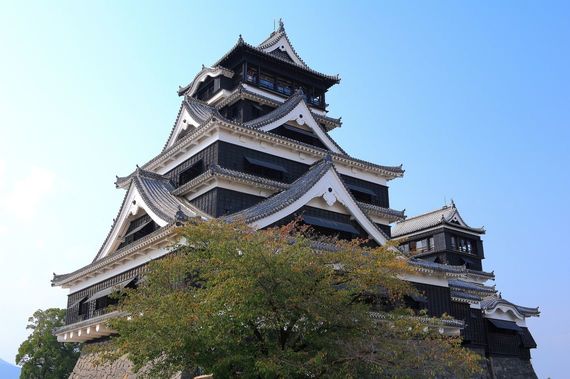
The beautiful towers often seen on Japanese castles were actually technological marvels, especially when it came to their superb use of plants. Let’s look at the pine tree as a primary example. With their sprawling majesty that went well with the imposing castle towers, pines were often found at many Japanese fortifications.
Pines are evergreens, which means that their foliage remains verdant and thick even in winter. It was that very tenacious vitality that eventually made people associate pines with good fortune, resulting in them being planted on castle grounds. With time, pines came to be revered as the best talismans in all of Japan.
Amazing abilities of pine tree
However, while pines are evergreens, they do actually lose some of their foliage. Unlike most trees, though, they don’t just drop it all at once; they lose it little by little. But if you look closely at some of their fallen needles, you’ll notice that they fall in sets of two. This used to be considered a symbol of “marital harmony.”
Still, despite being the pinnacles of festiveness, pines still had a practical use.
During the Warring States period, castles were often besieged by enemy troops that would cut off the castle’s supply routes. That’s why fortifications needed to be fully stocked with provisions, and have wells dug within their walls to provide fresh drinking water.
But there were also times when, during a besiegement, the castle inhabitants would use pine trees as emergency rations.
It might be surprising to hear that people used to eat pines but, actually, when you peel away their bark, you’ll notice that underneath it they have a thin, white inner bark that is rich in protein and fats. Once you wash the lye off of it, dry it, and then use a mortar to grind the bark into a powder, you can mix it with rice to make matsukawa mochi (lit. “pine bark mochi”), a type of Japanese rice cake.
And that is why the pine tree, with its ornamental and military uses, was considered an especially wonderful plant.
During the Edo period (1603-1868) , peace spread throughout Japan. But on the island of Kyushu, the flames of rebellion were still being fanned by the Shimazu clan of Satsuma, at least according to the ruling Tokugawa clan.
When Nagamasa Kuroda--the previous vassal to the Toyotomi clan, and a commander in the Eastern Army during the Battle of Sekigahara--became the first lord of the Fukuoka Domain, he took up residence at Fukuoka Castle.
The castle was designed with the so-called “Tamon turrets” that were used as armories, which was to be expected considering that one of the ways to write the Japanese word for “turret” (yagura) is with the characters for “arrow” and “storehouse.”
The true genius of these turrets could be seen in their walls which were made out of woven bamboo that could be turned into arrows during a battle. But what’s really surprising is that the makeshift arrows wouldn’t be bound together with string, but with dried bracken, the same plant that was occasionally used as emergency provisions.
The secrets of Kumamoto Castle
This type of design was eventually perfected at Kumamoto Castle by Kiyomasa Kato (1562-1611), the military commander famous for hunting tigers for sport.
Kiyomasa was originally a vassal of Hideyoshi Toyotomi, shogun or military commander at the time, but after his death, Kiyomasa swore allegiance to Ieyasu Tokugawa, who became shogun after Toyotomi, and set out to quash the Shimazu clan of Satsuma by establishing a stronghold in the neighboring Higo Province (modern Kumamoto.)
Kumamoto Castle was widely regarded as an impenetrable fortress. It was never attacked during the Edo period, but when a rebellion broke out during the Meiji era in southern Japan in 1877, the castle became a military base for governmental troops. As such, it became the target of the rebelling Satsuma army led by Takamori Saigo who, despite fierce attacks, was never able to take the castle.
It’s said that Takamori once caught himself lamenting: “I haven’t lost to the loyalists. I’ve lost to Lord Kiyomasa.”
It’s worth mentioning that Kumamoto Castle was an “edible castle.” For example, the castle’s tatami mats, which would normally be made from straw, were actually made out of nonperishable, edible taro stems.
Taro stems were also used within the frameworks of Kumamoto Castle’s mud barricades while its walls were supposedly plastered with dried gourd, making it a truly edible castle.
The reason why Kiyomasa put so much thought into ensuring that his castle had enough rations was because he experienced firsthand the hardships of living in a besieged fortification during Japan’s invasion of Korea near the end of the 16th century.

